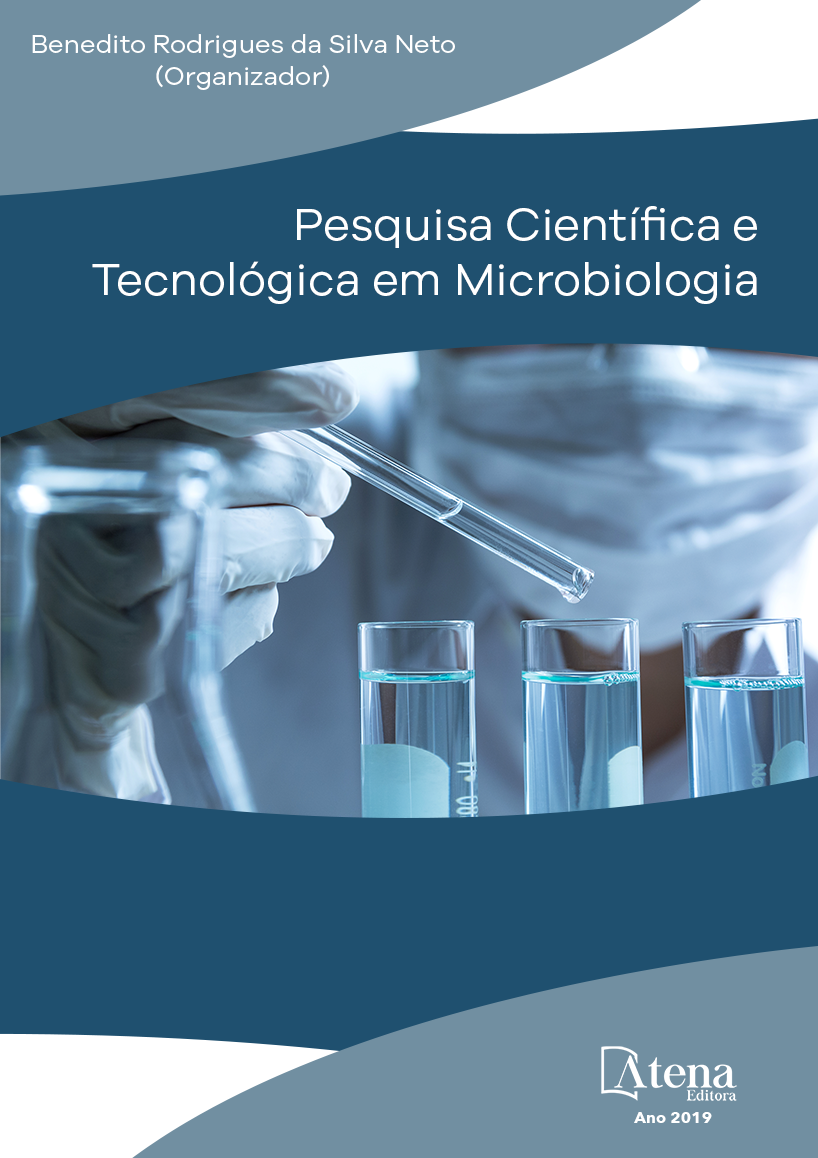
ENTEROBACTÉRIAS PRODUTORAS DE BETA-LACTAMASE DE ESPECTRO AMPLIADO (ESBL) EM COPROCULTURA DE PACIENTES AMBULATORIAIS
Nos últimos anos tem se observado
um rápido aumento na resistência bacteriana
no mundo. Assim, o objetivo deste trabalho
foi caracterizar isolados de enterobactérias
através da determinação do perfil de
resistência aos antimicrobianos β-lactâmicos e
pesquisa dos genes blaCTX-M, blaTEM e blaSHV. A
susceptibilidade aos agentes antimicrobianos
dos isolados foi avaliada pelo método de disco
difusão e pelo sistema automatizado VITEK 2.
Foram obtidos 176 isolados, distribuídos em
Enterobacter spp 42,86% (6/14), Klebsiella spp.
28,57% (4/14), Escherichia coli 14,28% (2/14),
Shigella flexneri 14,28% (2/14), destes 7,95%
(14/176) apresentaram perfil de resistência
aos antimicrobianos β-lactâmicos, os testes de
suscetibilidade demonstrando que 100% das
amostras foram resistentes à ampicilina e as
cefalosporinas de primeira e segunda geração,
85% foram resistentes à cefalosporina de
terceira geração e 9% resistente à cefalosporina
de quarta geração. Também foi identificado um
isolado de Escherichia coli resistente à todas as
cefalosporinas, incluindo as de amplo espectro
e ao aztreonam e um isolado de Enterobacter
spp resistente ao ertapenem. A analise genética
dos isolados positivos para a produção de
ESBL, identificou o gene blaCTX-M em 92,85%
(13/14) (Enterobacter spp, 5; Klebsiella spp
,4; Shigella flexneri, 2 e Escherichia coli, 2),
blaTEM em 21,43% (3/14) (Enterobacter spp, 2
e Klebsiella spp., 1) e a combinação dos genes
blaCTX-M e blaTEM foi encontrado em 14,28%
(2/14). Os resultados deste estudo demonstram
que a avaliação contínua da resistência aos
β-lactâmicos é extremamente importante,
evidenciando o valor de um monitoramento
contínuo e estratégias eficientes para diminuir
a propagação destes agentes.
ENTEROBACTÉRIAS PRODUTORAS DE BETA-LACTAMASE DE ESPECTRO AMPLIADO (ESBL) EM COPROCULTURA DE PACIENTES AMBULATORIAIS
-
DOI: 10.22533/at.ed.72719111113
-
Palavras-chave: β-lactamases, ESBL, Resistência antimicrobiana, Enterobactérias.
-
Keywords: Β-lactamase, ESBL, Antimicrobial resistance, Enterobacteria.
-
Abstract:
In recent years there has been a rapid increase in bacterial resistance in
the world. Thus, the objective of this work was to characterize isolates of enterobacteria
by determining the resistance profile to β-lactam antimicrobials and blaCTX-M, blaTEM and
blaSHV gene research. The susceptibility to the antimicrobial agents of the isolates was
evaluated by disk diffusion method and the VITEK 2 automated system. 176 isolates,
distributed in Enterobacter spp 42.86% (6/14), Klebsiella spp. 28.57% (4/14), Escherichia
coli 14.28% (2/14), Shigella flexneri 14.28% (2/14), 7.95% of these (14/176) presented
β-lactams antimicrobial resistance profile, susceptibility testing demonstrating that
100% of the samples were resistant to ampicillin and cephalosporins of first and second
generation, 85% were resistant to third generation cephalosporins and 9% resistant
to fourth generation cephalosporin. It was also identified a cephalosporin-resistant
Escherichia coli isolate, including those of broad spectrum and aztreonam and an
Enterobacter spp isolate resistant to ertapenem. Genetic analysis of positive isolates
for the production of ESBL, identified the bla CTX-M gene at 92.85% (13/14) (Enterobacter
spp, 5; Klebsiella spp, 4; Shigella flexneri, 2 and Escherichia coli, 2), blaTEM at 21.43%
(3/14) (Enterobacter spp, 2 and Klebsiella spp., 1) and the combination of genes
blaCTX-M and blaTEM was found at 14.28% (2/14). The results of this study demonstrate
that continuous evaluation of β-lactam resistance is extremely important, highlighting
the value of continuous monitoring and efficient strategies to slow the spread of these
agents.
-
Número de páginas: 15
- Érica Kássia Sousa Vidal
- Karina Lúcia Silva da Silva
- Débora de Castro Costa
- Anderson Nonato do Rosario Marinho
- Daniela Cristiane da Cruz Rocha


